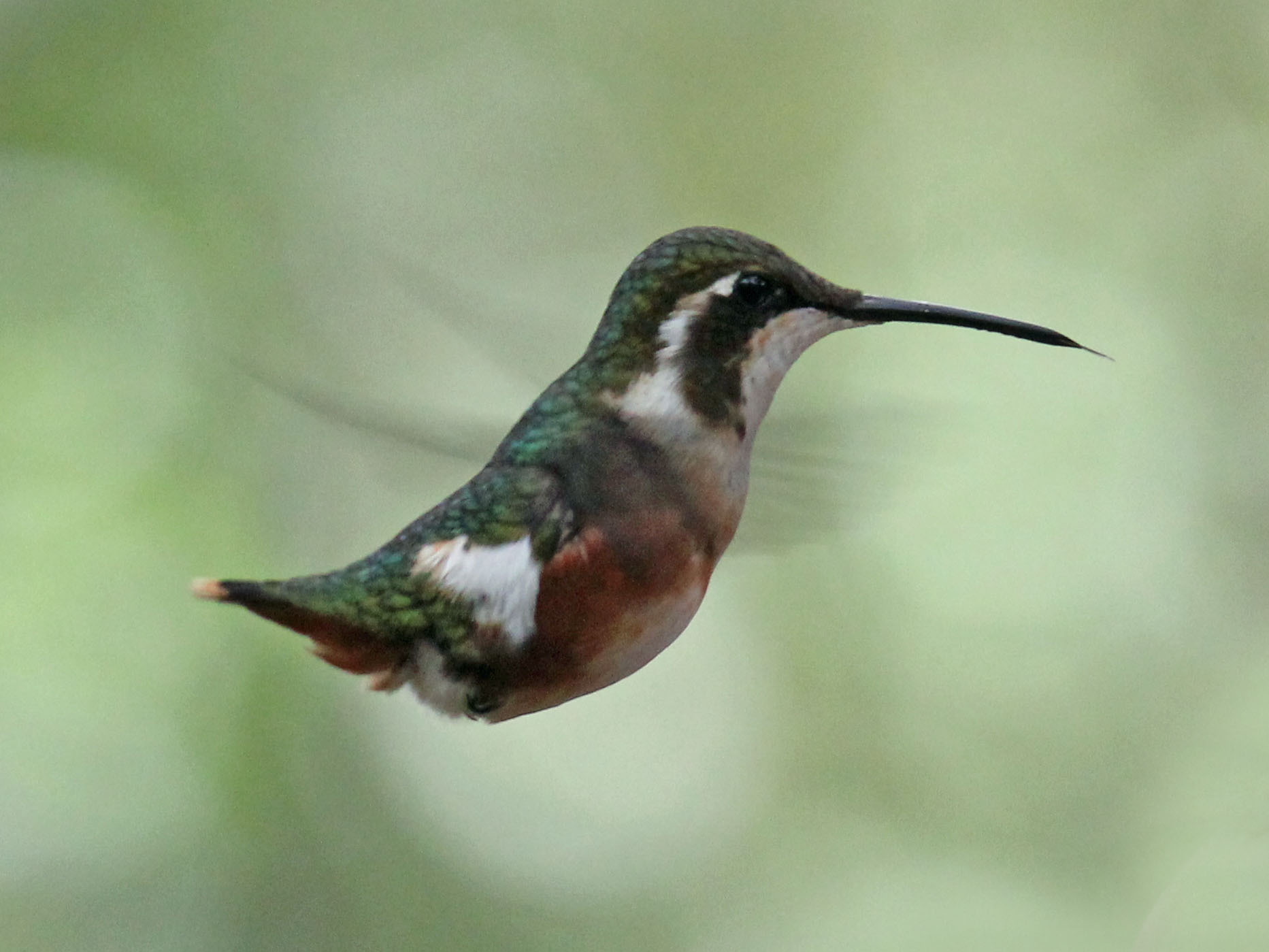White-bellied Woodstar on:
[Wikipedia]
[Google]
[Amazon]
The white-bellied woodstar (''Chaetocercus mulsant'') is a species of hummingbird in tribe


Mellisugini
Mellisugini is one of the three tribes that make up the subfamily Trochilinae in the hummingbird family Trochilidae. The other two tribes in the subfamily are Lampornithini (mountain gems) and Trochilini (emeralds).
The informal name "bees" has ...
of subfamily Trochilinae
Trochilinae is one of the six subfamilies that make up the hummingbird family Trochilidae.
The subfamily is divided into three tribes: Lampornithini (mountain gems) containing 18 species, Mellisugini (bees) containing 37 species and Trochili ...
, the "bee hummingbirds". It is found in Bolivia, Colombia, Ecuador
Ecuador ( ; ; Quechua: ''Ikwayur''; Shuar: ''Ecuador'' or ''Ekuatur''), officially the Republic of Ecuador ( es, República del Ecuador, which literally translates as "Republic of the Equator"; Quechua: ''Ikwadur Ripuwlika''; Shuar: ' ...
, and Peru
, image_flag = Flag of Peru.svg
, image_coat = Escudo nacional del Perú.svg
, other_symbol = Great Seal of the State
, other_symbol_type = National seal
, national_motto = "Firm and Happy f ...
.HBW and BirdLife International (2020) ''Handbook of the Birds of the World and BirdLife International digital checklist of the birds of the world'' Version 5. Available at: http://datazone.birdlife.org/userfiles/file/Species/Taxonomy/HBW-BirdLife_Checklist_v5_Dec20.zip xls zipped 1 MBretrieved 27 May 2021Remsen, J. V., Jr., J. I. Areta, E. Bonaccorso, S. Claramunt, A. Jaramillo, D. F. Lane, J. F. Pacheco, M. B. Robbins, F. G. Stiles, and K. J. Zimmer. Version 24 July 2022. Species Lists of Birds for South American Countries and Territories. https://www.museum.lsu.edu/~Remsen/SACCCountryLists.htm retrieved July 24, 2022
Taxonomy and systematics
The white-bellied woodstar and several other species in genus ''Chaetocercus'' were formerly placed in genus ''Acestrura'' but have been in their current position since the late 20th century. The species ismonotypic
In biology, a monotypic taxon is a taxonomic group (taxon) that contains only one immediately subordinate taxon. A monotypic species is one that does not include subspecies or smaller, infraspecific taxa. In the case of genera, the term "unispe ...
.

Description
The white-bellied woodstar is about long and weighs about . Both sexes have a straightish black bill. The male's upperparts are dark bluish green which continues onto the flanks. A downcurving white line behind the eye meets the white upper breast. Itsgorget
A gorget , from the French ' meaning throat, was a band of linen wrapped around a woman's neck and head in the medieval period or the lower part of a simple chaperon hood. The term later described a steel or leather collar to protect the th ...
is iridescent reddish violet. The belly is white as are patches on the flanks. The forked tail is bluish green and its outermost feathers are shafts with no vanes. The female is bronzy green above. It has a grayish "mask" and a buff stripe behind the eye. Its throat is pale cinnamon, the belly white, and the flanks tawny. Its tail is rounded; the central feathers are green and the others cinnamon with a wide black band near the end.Züchner, T., P. F. D. Boesman, and G. M. Kirwan (2020). White-bellied Woodstar (''Chaetocercus mulsant''), version 1.0. In Birds of the World (J. del Hoyo, A. Elliott, J. Sargatal, D. A. Christie, and E. de Juana, Editors). Cornell Lab of Ornithology, Ithaca, NY, USA. https://doi.org/10.2173/bow.whbwoo6.01 retrieved July 25, 2022

Distribution and habitat
The white-bellied woodstar is found from the Central and Eastern Andes of Colombia south discontinuously through Ecuador and Peru into Bolivia as far asCochabamba Department
Cochabamba ( ay, Quchapampa Jach'a Suyu, es, Departamento de Cochabamba , qu, Quchapampa Suyu), from Quechua ''qucha'' or ''qhucha'', meaning "lake", ''pampa'' meaning "plain", is one of the nine departments of Bolivia. It is known to be the ...
. It inhabits the edges of humid forest, pastures, and cultivated areas. In elevation it is most common between but is regularly found as low as and there are reports as high as .
Behavior
Movement
The white-bellied woodstar is mainly sedentary though the records up to 4000 m suggest that it makes seasonal elevational movements.Feeding
The white-bellied woodstar forages at all levels of vegetation, taking nectar from a variety of flowering plants and trees including ''Agave'', ''Inga'', and ''Lantana''. It also eats smallarthropod
Arthropods (, (gen. ποδός)) are invertebrate animals with an exoskeleton, a segmented body, and paired jointed appendages. Arthropods form the phylum Arthropoda. They are distinguished by their jointed limbs and cuticle made of chiti ...
s. It does not defend feeding territories, and because of its small size and slow bumblebee-like flight it is able to feed in the territories of other hummingbirds.
Breeding
Almost nothing is known about the white-bellied woodstar's breeding phenology. One nest was discovered in April in Ecuador; it was about up in tree.Vocalization
The white-bellied woodstar's calls include "a rather low-pitched 'djup' note and higher-pitched dull 'chip'."Status
The IUCN has assessed the white-bellied woodstar as being of Least Concern. It has a large range, and though its population size is not known it is believed to be stable. It is considered uncommon to locally common in various parts of its range and may be more common than thought because it is easy to overlook. It appears to adapt to human-made landscapes.References
{{Taxonbar, from=Q1265206 white-bellied woodstar Birds of the Northern Andes white-bellied woodstar white-bellied woodstar Taxonomy articles created by Polbot